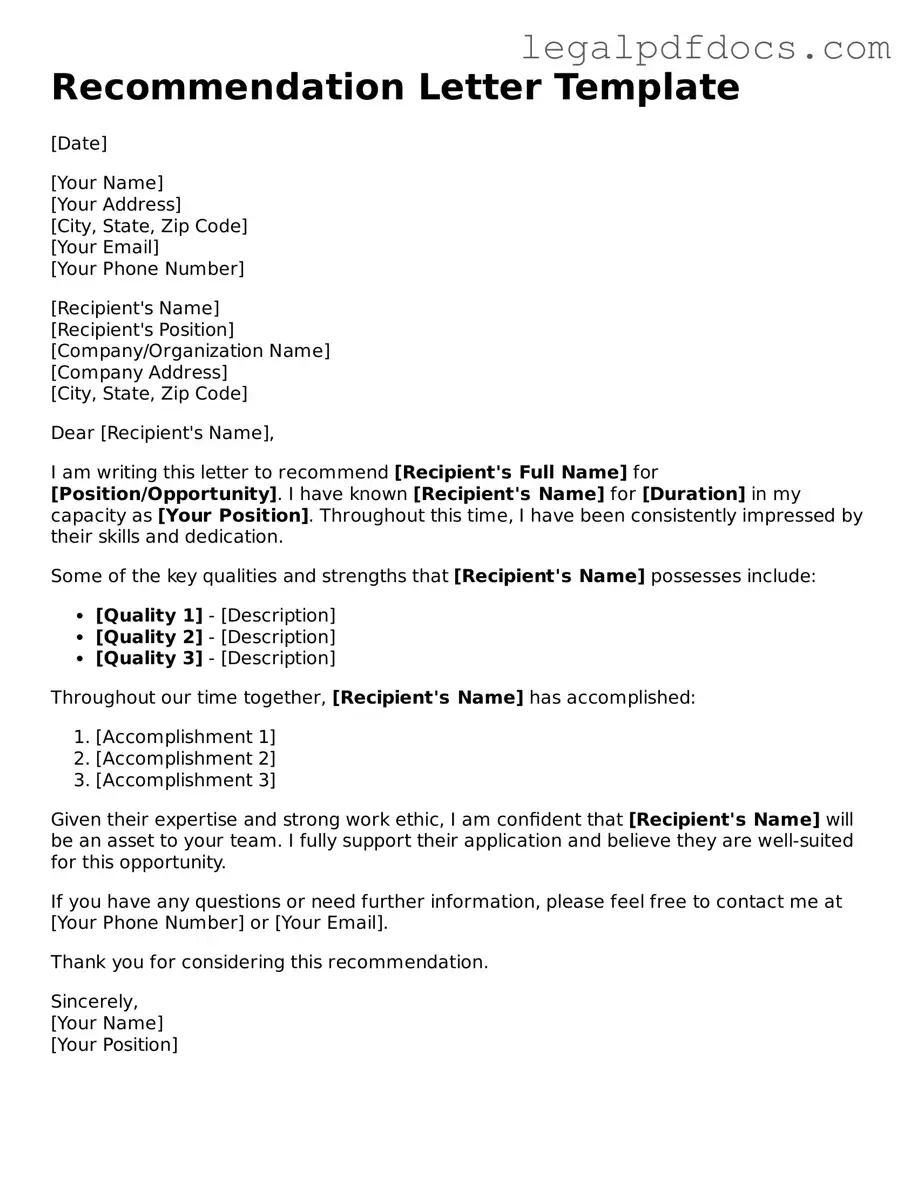When seeking opportunities in academics or the professional world, a recommendation letter can serve as a vital tool in showcasing an individual's qualifications and character. This form typically requests detailed insights about a candidate's skills, work ethic, and personal attributes from someone familiar with their capabilities, such as a teacher, employer, or mentor. The structure of the recommendation letter form often includes sections for the recommender's contact information, a description of their relationship with the candidate, and specific examples that highlight the candidate's strengths. Additionally, it may prompt the recommender to address particular qualities or achievements that align with the prospective role or program. By providing a clear format, the recommendation letter form ensures that the feedback is organized and focused, making it easier for decision-makers to evaluate the applicant's potential. Understanding the components of this form is essential for both recommenders and candidates, as it can significantly impact the candidate's chances of success.
